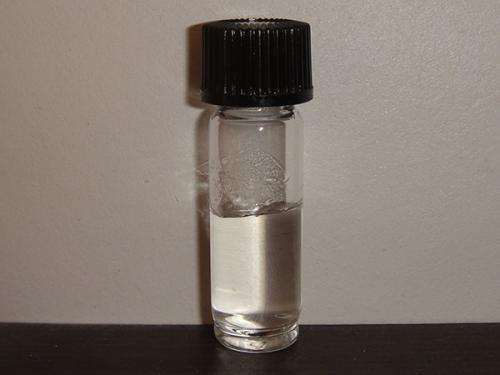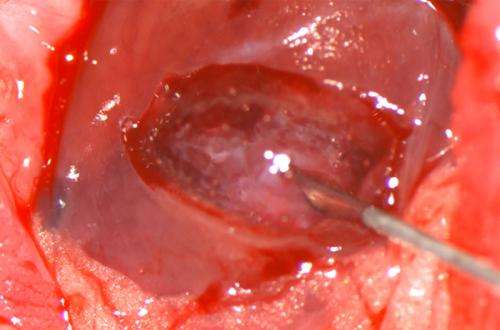Neutral self-assembling peptide hydrogel

Self-assembling peptides are characterized by a stable β-sheet structure and are known to undergo self-assembly into nanofibers that could further form a hydrogel. Self-assembling peptide hydrogels have already been employed for tissue engineering, drug delivery systems, and wound healing. In addition, self-assembling peptide hydrogels are effective as topical hemostatic agents. However, their low pH raises the possibility of harmful effects on living tissues.
Now, Seiji Komatsu and colleagues at Okayama University have demonstrated the efficacy of SPG-178 hydrogel, a neutral self-assembling peptide hydrogel as a topical hemostatic agent.
First, they measured the bleeding duration of incisions made on rat livers after application of SPG-178 (1.0% w/v), SPG-178 (1.5% w/v), RADA16 (1.0% w/v), and saline. Second, they observed the bleeding surfaces by transmission electron microscopy immediately after hemostasis. Third, they measured the elastic and viscous responses (G′ and G′′, respectively) of the hydrogels using a rheometer.
Their results showed that the duration of bleeding was significantly shorter in the SPG-178 group than in the RADA16 group and that there were no significant differences in transmission electron microscopy findings between the groups. The greater the G′ value of a hydrogel, the shorter was the bleeding duration.
SPG-178 hydrogel is effective and has several advantages over other hydrogels: it is non-biological, transparent, non-adherent and neutral, and can be sterilized by autoclaving. The researchers are confident that SPG-178 hydrogel is applicable in many surgical procedures.

More information: Seiji Komatsu, Yusuke Nagai, Keiji Naruse, Yoshihiro Kimata. "The Neutral Self-Assembling Peptide Hydrogel SPG-178 as a Topical Hemostatic Agent." PLOS ONE 9, e102778 (2014). (DOI): 10.1371/journal.pone.0102778
Journal information: PLoS ONE
Provided by Okayama University




















